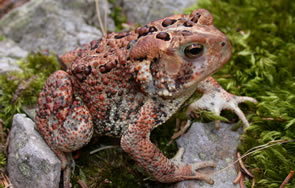
American Toad
Bufo americanus
Photo by JD Willson
Description: As North Carolina’s largest toad, the American toad is highly variable in color and pattern. It has dry, warty skin that may be brown, gray, olive, tan, or reddish with varying degrees of mottling and dark spots. It may have a light stripe running down the middle of its back. In North Carolina, all members of the family Bufonidaehave large, oblong parotoid glands on the sides of their heads. The American toad may be distinguished from the closely related Fowler’s toad by the presence of enlarged warts on the lower section of each leg (tibia); only one or two large warts within each large dark spot on the back; usually dark mottling on the chest; more pronounced cranial crests; and parotoid glands that are either separate from the cranial crest or connected to it by a short spur. Males are smaller than females and have dark throats.
Habitats and Habits: American toads are found throughout most of the Mountains and Piedmont and in portions of the northeastern Coastal Plain. They prefer to breed in ephemeral woodland pools and other temporary wetlands, but will also use other bodies of water, from small puddles to permanent ponds and shallow backwaters of rivers. Several thousand eggs are deposited in long strings and hatch in a few days. The small blackish tadpoles develop in about eight weeks, transforming into tiny toadlets less than half an inch long. American toads may hybridize with Fowler’s and southern toads in areas where their ranges overlap.
Call: American toads breed from February to April. Their call is a long, high-pitched, musical trill, often lasting up to half a minute. Males also produce a chirping “release call” if handled or mistakenly grasped by another male.
Frog Fact: Toads are economically important because of the vast quantities of insects they consume. By eating insects that destroy crops, American toads can save farmers, horticulturists and consumers substantial amounts of money.
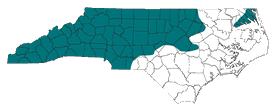
The shaded region represents the range of the American toad in North Carolina.
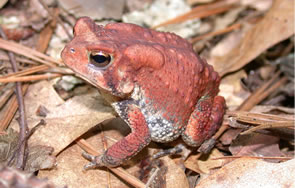
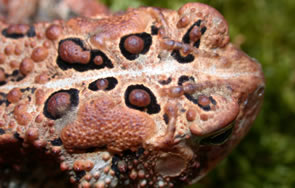
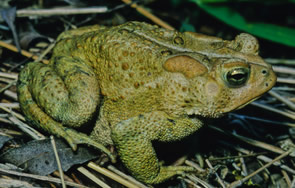
One or two warts within each dark spot distinguish the American toad from the closely related Fowler's toad.
Photo
by JD Willson
Photo by Charlie Eichelberger
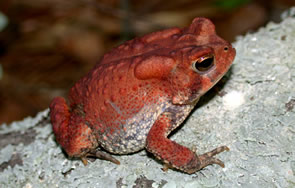
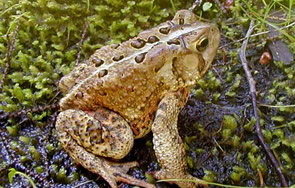
Photo by JD Willson
This website created by: Grant Connette and Evan Eskew.
Davidson College, Davidson, North Carolina 28035-1719.
Text and maps from: The Frogs and Toads of North Carolina. North Carolina Wildlife Resources Commission, Raleigh, NC.
Partial Funding for this website provided by a Associate Colleges of the South, National Science Foundation, and Duke Energy.